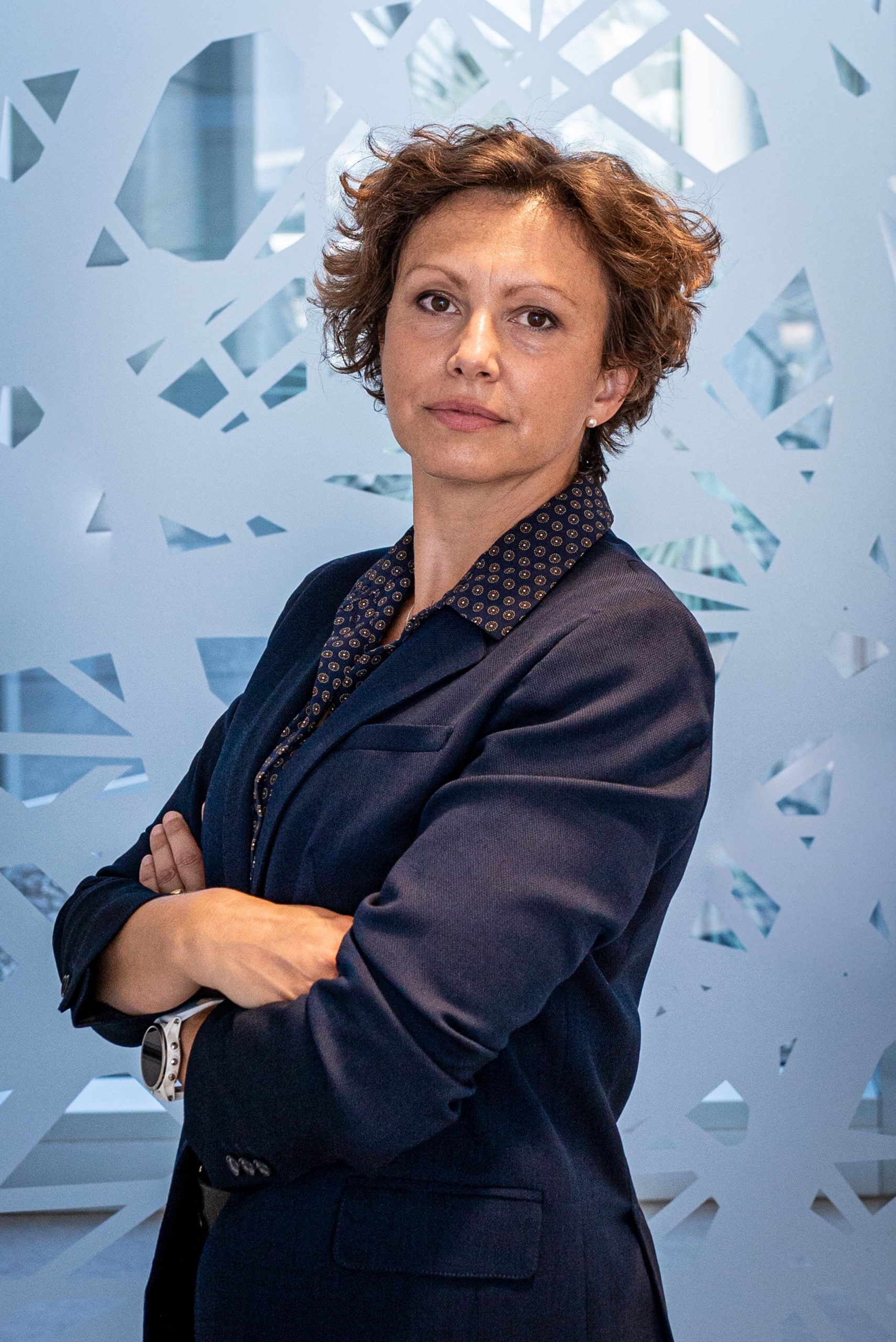
Gaia Pigino
- Associate Head of Structural Biology Research Centre, Biologia Strutturale
- Research Group Leader, Pigino Group
Gaia Pigino è Associate Head del Centro di Biologia Strutturale di Human Technopole.
È, inoltre, responsabile di un gruppo di ricerca al Max Planck Institute of Molecular Cell Biology and Genetics a Dresda, in Germania.
Nata a Siena nel 1976, si è laureata in scienze naturali all’Università di Siena nel 2002. Dopo essere stata research associate nel dipartimento di scienze ambientali dell’Università di Siena nel 2003, ha svolto un dottorato nel Dipartimento di biologia evolutiva dell’Ateneo senese, conseguito nel 2007.
Dal 2007 al 2009 è stata assegnista di ricerca post-dottorato (vincendo un bando del Ministero Italiano dell’Istruzione, dell’Università e della Ricerca – MIUR) presso il laboratorio Cryotechniques for Electron Microscopy dell’Università di Siena.
Nel 2009 ha seguito il prestigioso corso di Fisiologia al Marine Biological Laboratory (MBL) a Woods Hole (Massachusetts, USA) per poi svolgere, dal 2009 al 2011, attività di ricerca post-dottorato al Institute for Molecular Biology and Biophysics, Swiss Federal Institute of Technology (ETH) di Zurigo. Dopo aver vinto una post-doctoral fellowship dell’European Molecular Biology Organization (EMBO), ha iniziato le sue attività di ricerca presso il Biology and Chemistry Department del Paul Scherer Institute (PSI) in Svizzera.
Dal 2012 è responsabile di un gruppo di ricerca nonchè faculty member del Max Planck Institute of Molecular Cell Biology di Dresda.
Dal 2013 svolge attività di insegnamento in qualità di lecturer a studenti master e dottorandi del Max Planck Institute e della Technical University di Dresda.
Negli ultimi quattro anni ha partecipato a più di 40 tra congressi, conferenze, seminari e forum scientifici internazionali in qualità di conference chair o speaker.
Ha conseguito riconoscimenti e fondi per la ricerca a livello internazionale, tra i quali il Keith R. Porter Fellow Award per la Biologia Cellulare nel 2018, un European Research Council (ERC) Consolidator grant nel 2018 e un German Research Foundation (DFG) grant nel 2019.
È autrice di oltre 30 studi pubblicati su prestigiose riviste scientifiche internazionali, per molti dei quali è anche corresponding author. Tra gli articoli consigliati su F1000Prime/FacultyOpinions, il servizio che raccomanda le migliori pubblicazioni nei campi della biologia e della medicina attraverso i giudizi dei più influenti studiosi a livello mondiale, figurano ad esempio: “The molecular structure of mammalian primary cilia revealed by cryo-electron tomography” (Nature Structural Molecular Biology, 2020. “The Cryo-EM structure of Intraflagellar Transport Trains reveals how its motors avoid engaging in a tug-of-war” (Nature Cell Biology, 2018), “Microtubule doublets are double-track railways for intraflagellar transport trains” (Science, 2016), “Cryoelectron tomography of radial spokes in cilia and flagella” (The Journal of Cell Biology, 2011) e “Electron-tomographic analysis of intraflagellar transport particle trains in situ” (The Journal of Cell Biology, 2009).
Attività di ricerca
Nel Centro di biologia strutturale di Human Technopole, Gaia Pigino studierà i meccanismi molecolari necessari per l’assemblaggio e il funzionamento del ciglio, un organello presente nelle cellule eucariote di fondamentale importanza per la salute dell’umano in quanto la sua attività è legata all’insorgenza di numerose patologie, collettivamente definite ciliopatie. Gaia Pigino si occuperà di studiare i meccanismi molecolari e la funzione del ciglio indagando la struttura 3D dei suoi componenti.
Il lavoro di ricerca del suo team si posiziona nell’interfaccia tra biologia strutturale e biologia cellulare molecolare e vedrà l’utilizzo degli strumenti e metodologie più recenti in entrambi i campi: dalla crio-tomografia crioelettronica, alla microscopia a fluorescenza correlativa (CLEM), ai sistemi dinamici ricostituiti in vitro, alla genetica, alla biochimica, fino alla biologia cellulare più classica.
Email: gaia.pigino[at]fht.org
Contatti
Segui
Pubblicazioni
-
03/2021 - PLoS Genet
Ccdc113/Ccdc96 complex, a novel regulator of ciliary beating that connects radial spoke 3 to dynein g and the nexin link
Ciliary beating requires the coordinated activity of numerous axonemal complexes. The protein composition and role of radial spokes (RS), nexin links (N-DRC) and dyneins (ODAs and IDAs) is well established. However, how information is transmitted from the central apparatus to the RS and across other ciliary structures remains unclear. Here, we identify a complex comprising […]
-
01/2021 - Science
Tubulin glycylation controls axonemal dynein activity, flagellar beat, and male fertility beat, and male fertility
Posttranslational modifications of the microtubule cytoskeleton have emerged as key regulators of cellular functions, and their perturbations have been linked to a growing number of human pathologies. Tubulin glycylation modifies microtubules specifically in cilia and flagella, but its functional and mechanistic roles remain unclear. In this study, we generated a mouse model entirely lacking tubulin […]
-
09/2020 - Nature Structural Molecular Biology
The molecular structure of mammalian primary cilia revealed by cryo-electron tomography
Primary cilia are microtubule-based organelles that are important for signaling and sensing in eukaryotic cells. Unlike the thoroughly studied motile cilia, the three-dimensional architecture and molecular composition of primary cilia are largely unexplored. Yet, studying these aspects is necessary to understand how primary cilia function in health and disease. We developed an enabling method for […]
-
05/2020 - Molecular Biology of the Cell
Reorganization of budding yeast cytoplasm upon energy depletion
Yeast cells, when exposed to stress, can enter a protective state in which cell division, growth, and metabolism are down-regulated. They remain viable in this state until nutrients become available again. How cells enter this protective survival state and what happens at a cellular and subcellular level are largely unknown. In this study, we used […]
-
08/2019 - Scientific Reports
Microridges are apical epithelial projections formed of F-actin networks that organize the glycan layer
Apical projections are integral functional units of epithelial cells. Microvilli and stereocilia are cylindrical apical projections that are formed of bundled actin. Microridges on the other hand, extend laterally, forming labyrinthine patterns on surfaces of various kinds of squamous epithelial cells. So far, the structural organization and functions of microridges have remained elusive. We have […]